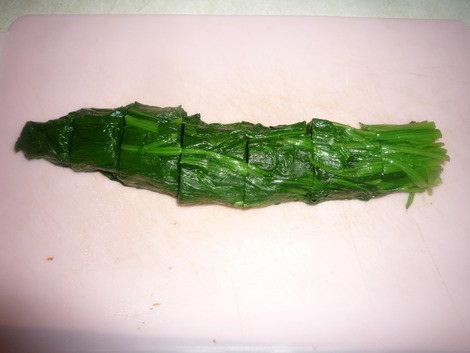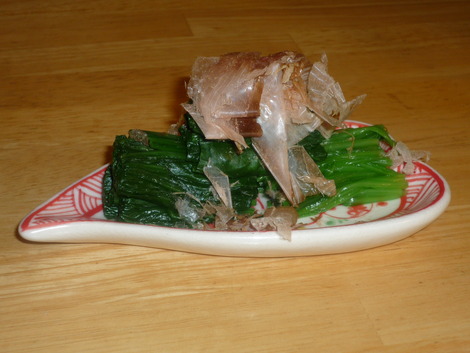Ohitashi is traditionally made with spinach but other green leafy vegetables can be used. There’s nothing fancy about this dish but over the years I’ve become more fond of it. There are no special cooking techniques involved here, although you will want to make sure you don’t over cook the spinach and squeeze out enough of the water so that it’s not watery.
One interesting thing about this old Japanese dish is that the spinach and katsuobushi combination is no mistake. Although, spinach has many nutritional benefits, it contains highs levels of oxalate which can contribute to gout and kidney stones. Katsuobushi has properties that helps negate the oxalate. It amazes me how people back then knew this stuff!
Ingredients (Servings 4)
1 bunch of spinach
Garnish with katsuobushi
Soy sauce to taste
Directions
1) Boil the spinach for 1 minute. (If you can find spinach with the roots on them, it makes it easier but I’m using spinach with the roots cut off here).
2) Pull the spinach out together by using tongs.
3) Keep the roots together and cool the spinach with cold water.
4) Once the spinach is cool, gently squeeze out the water.
5) Cut the spinach into 1.5 inch pieces.
6) Use different parts of the spinach and arrange on a plate.
7) Top with katsuobushi and drizzle a little soy sauce on top.
Boil the spinach. If you’re using spinach with the roots cut off, try not to move them too much and keep the stems together.
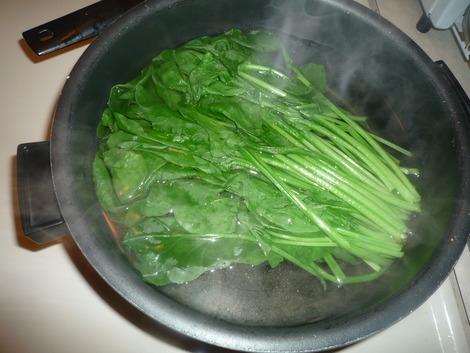
Tongs are a great tool to keep the roots together when pulling the spinach out. If the roots are attached, drain them and cool them in cold water and pull them out of the water by holding onto the roots.
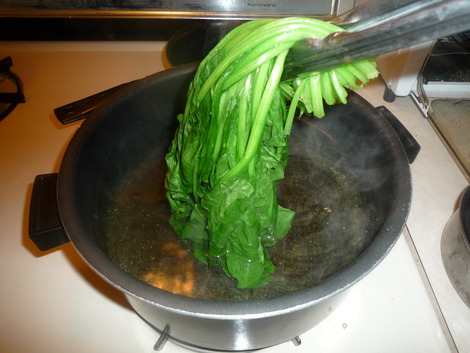
After cooling with cold water, gently squeeze out the water.
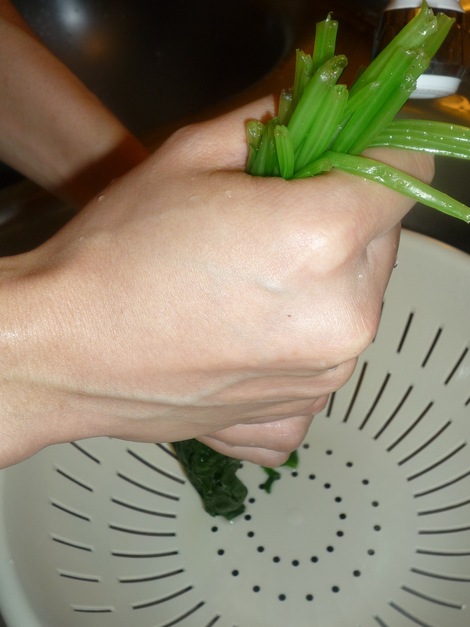
Arrange a little of each part of the spinach onto a plate.
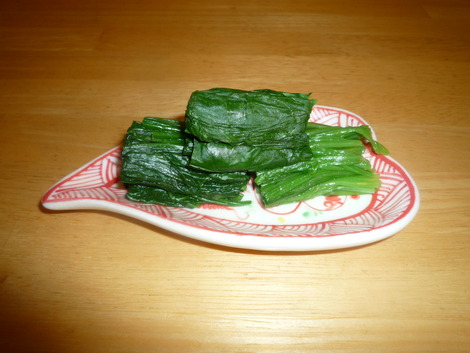
Drizzle a little soy sauce on top.
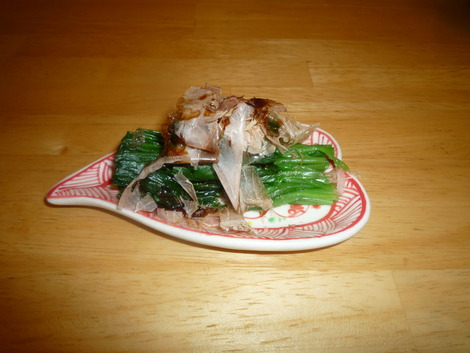

Naomi Kuwabara was born and raised in California but spent many summers in Japan growing up. She has spent time living in Hokkaido and Osaka, both meccas for Japanese cuisine. Her passion is cooking and sharing her experiences cooking Japanese food with others. Her blog Umamitopia is about her experiences cooking Japanese food. Her greatest inspirations are from her mother and grandmother. Her cooking adventures can be found at http://umamitopia.com.

